RIMLING
Lors de l'Opération Nordwind du 31 décembre 1944 à minuit, cette offensive allemande de la dernière chance pour arrêter l'avance rapide des Alliés à l'Ouest et tenter d'encercler la 7e Armée US, les Allemands ouvrirent un violent feu roulant d'artillerie et de lance-mines sur le village. Ce fut un déluge de feu et plus de 200 obus y tombèrent cette nuit-là.
Pour pouvoir tirer sur les troupes US, les Allemands avaient placé une dizaine de chars sur la colline au nord des "Schliessen" d'où ils tirèrent sans interruption durant toute la journée du 1er janvier 1945 et d'où ils lancèrent des attaques contre le 397e Régiment d'Infanterie US, essayant simultanément de profiter de leur succès à l'encontre de la 44e Division d'Infanterie US, à l'ouest du village. Les attaques allemandes furent repoussées grâce aux tirs du 374e bataillon d'artillerie de campagne US.
On the last day of 1944, the 3rd Battalion, 397th Infantry Regiment, was holding positions around the village of Rimling.
The 1st Platoon of Company K was dug in on a bare summit called Schlietzen Hill, northwest of the town. The hill was the highest peak in the area, commanding the ground to its west and north.
Just east of the 1st Platoon was the 2nd Platoon with positions that covered the road entering Rimling from the north and were the northernmost positions of the battalion.
The positions of the 3rd Platoon ran southwest along the road and ridge and then turned east to include the north edge of Rimling.
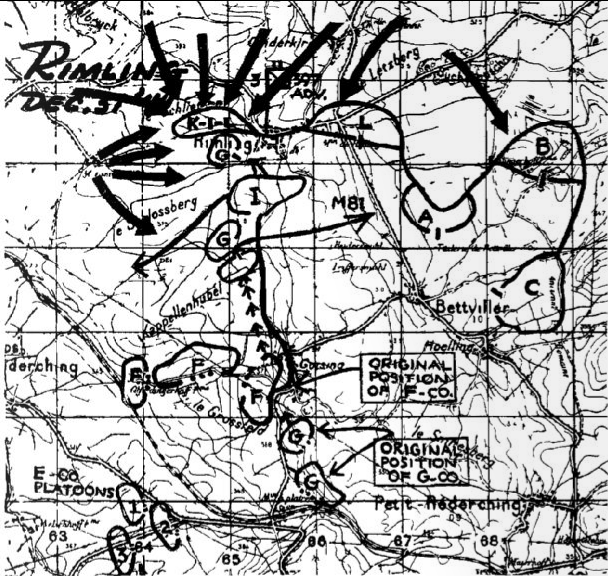
100th ID Century contre 17SS


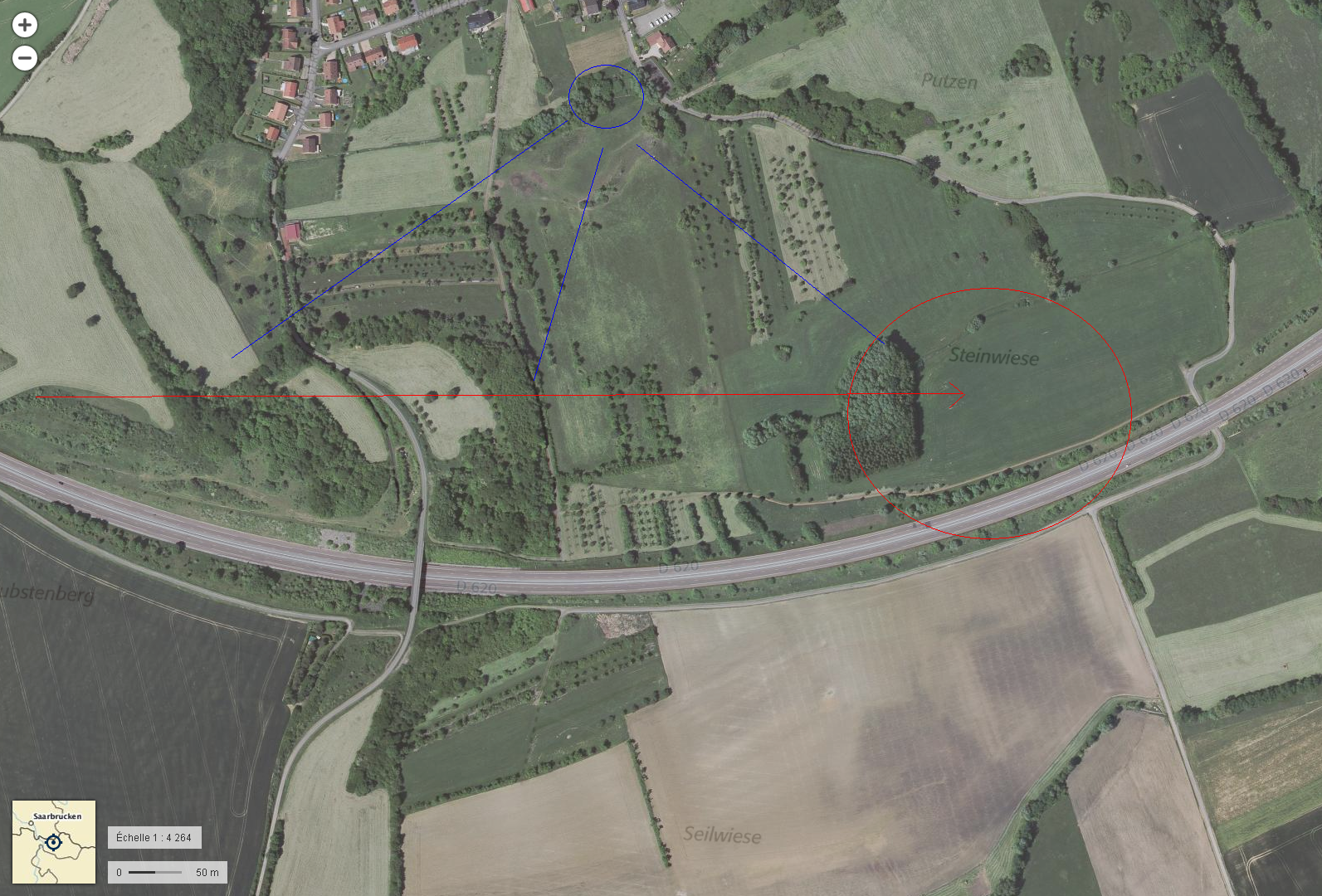
Les allemands lancent 3 attaques avant l'aube.
Au matin ils attaquent la compagnie K au nord et à l'ouest, qui se replie et contre-attaque à midi et rétablit ses positions.
8 Janvier, 1st Platoon of A/776th was attached to Combat Team 397 and went into action in the vicinity of Rimling, which was being attacked in force by elements of the 17th SS.
C'est dans la nuit du 7 au 8 janvier 1945 que les troupes SS tentèrent d'enlever la position quasi inexpugnable qu'était devenu Rimling, village qui protégeait ainsi Rohrbach de l'avance allemande. Les troupes fraîches de la 17e Panzer-Grenadier Division "Goetz von Berlichingen" se mirent en place: vers minuit, d'intenses tirs de préparation de l'artllerie allemande sur le village eurent lieu, et vers deux heures du matin, l'assaut des SS débuta. Une nouvelle fois, l'artillerie US stoppa l'avance ennemie mais les dégâts causés aux maisons de Rimling furent énormes. Des groupes SS réussirent malgré tout à s'infilter momentanément dans certains quartiers.
Au final l'attaque de Rimling le premier jour ne fut pas très bénéfique. [...] Par contre les allemands avaient percés à l'ouest et obligé les compagnie E et G a se replier vers le sud, les allemands avaient la possibilité d'avancer vers l'est et, à moins d'etre stoppés, pouvaient couper Rimling par le sud et encercler le village.
9 janvier 1945 Au matin, les allemands pénètrèrent à nouveau dans Rimling au nord et à l'ouest; leur attaque les porta le long du PC de la compagnie F. Une Trentaine d'hommes de la compagnie F coupés du reste de la compagnie et faits prisonniers. Six hommes du peloton antichar placé au PC par le Sgt Carey furent également capturés.

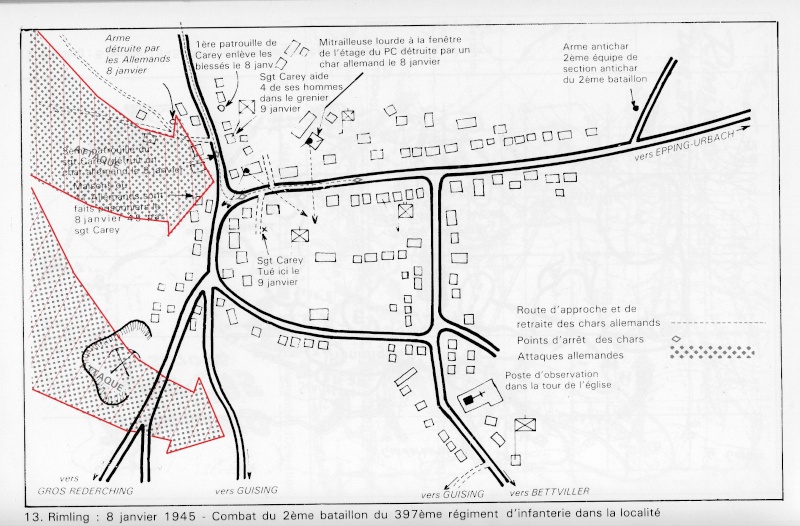
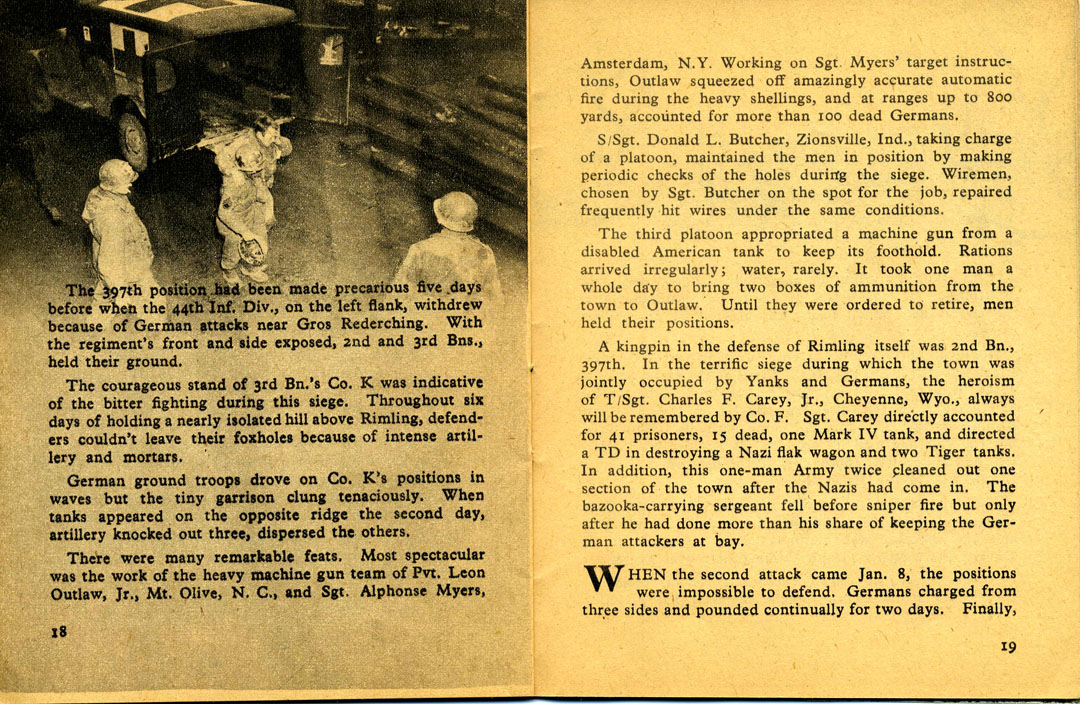
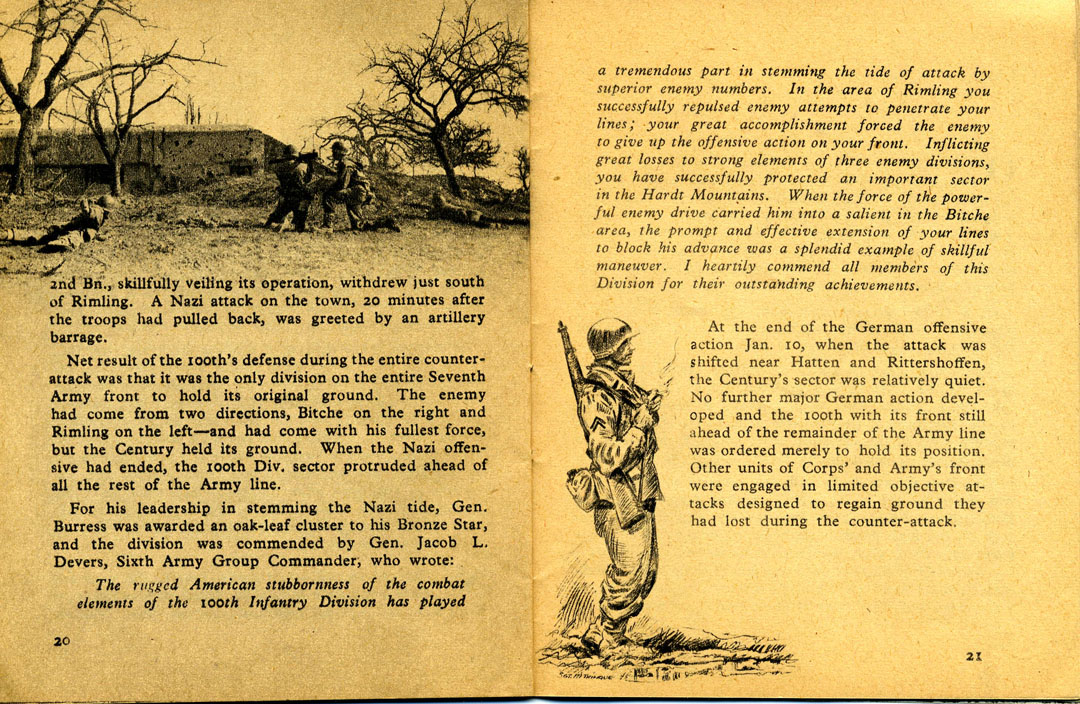
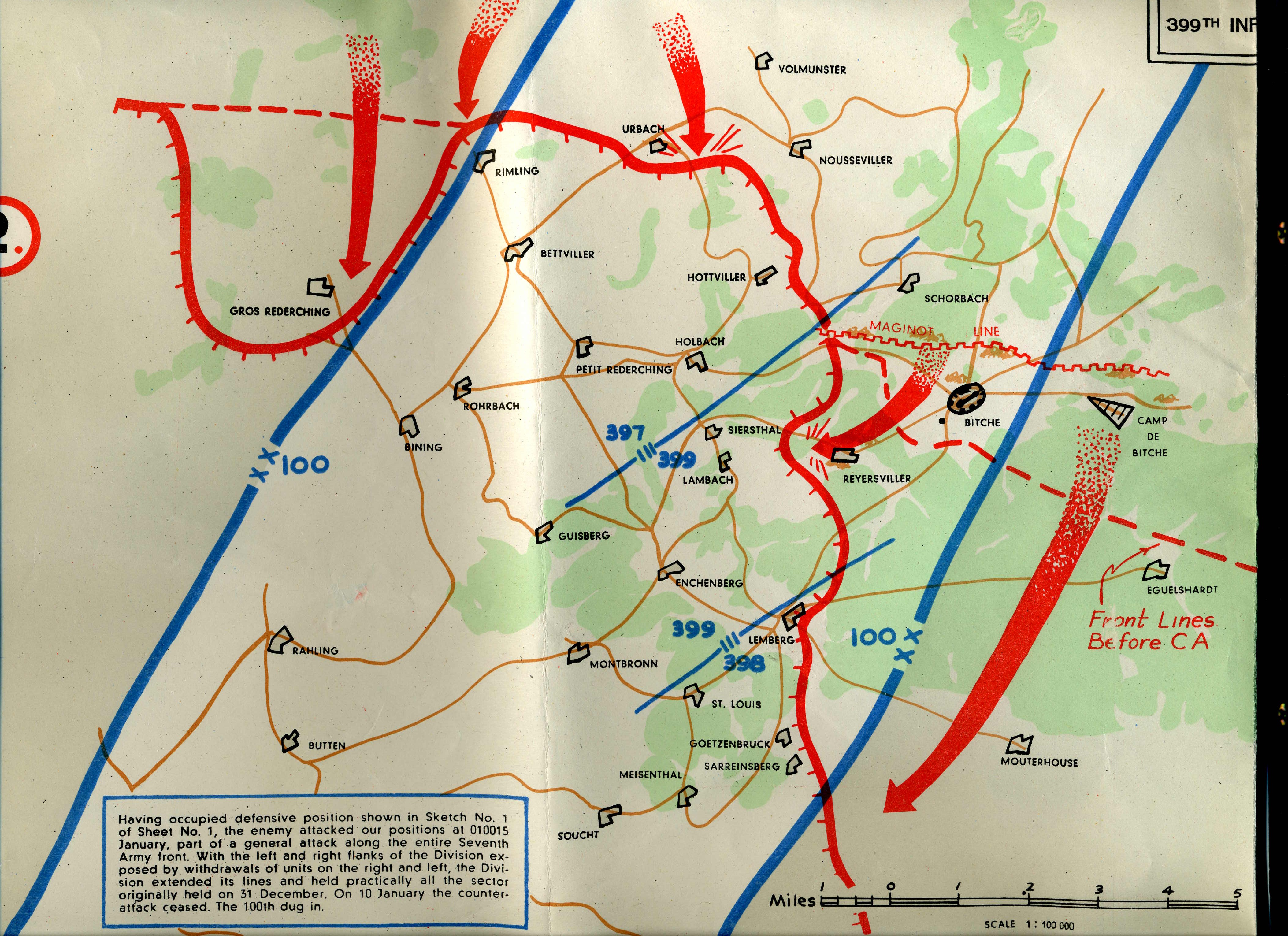
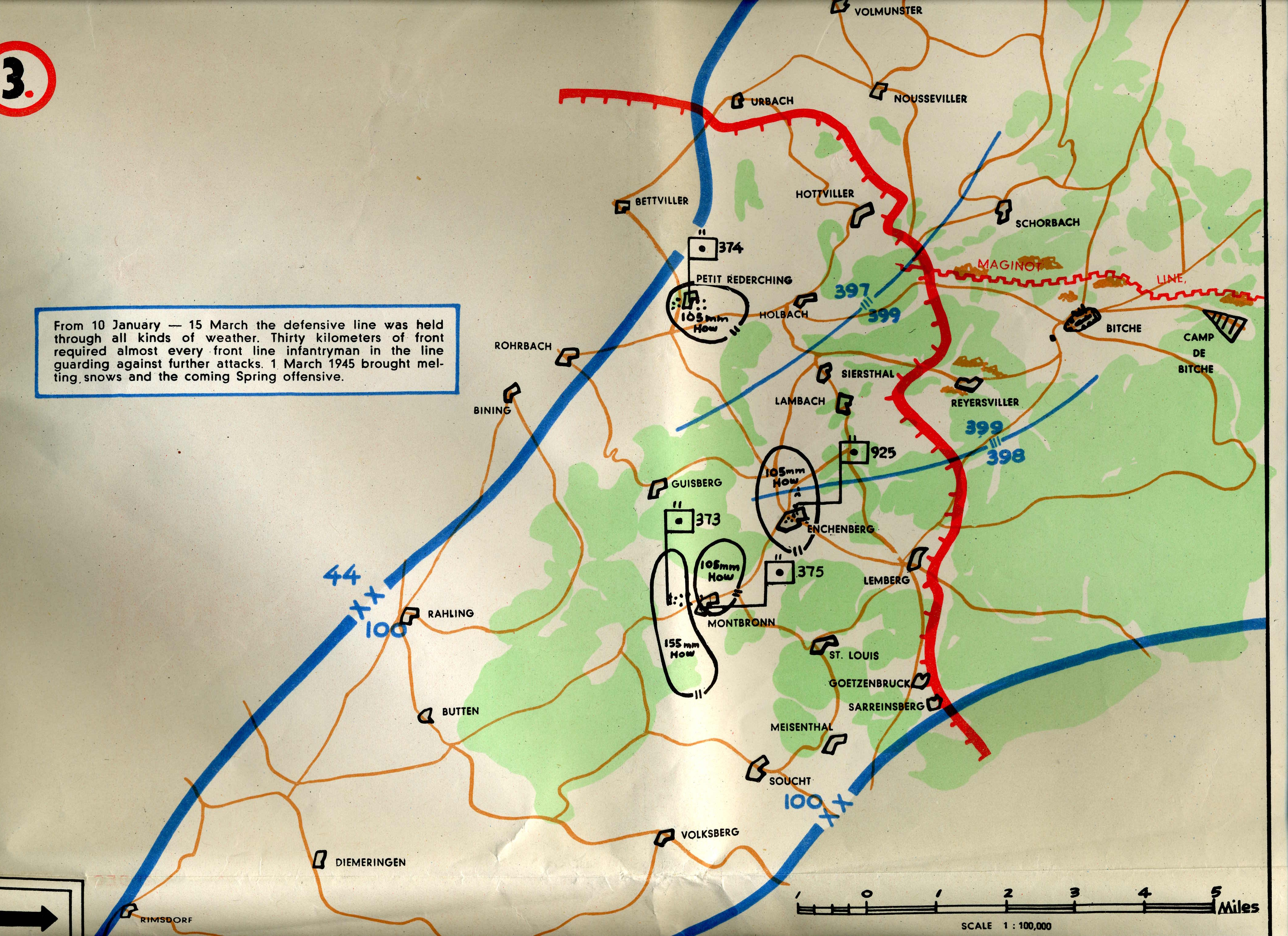

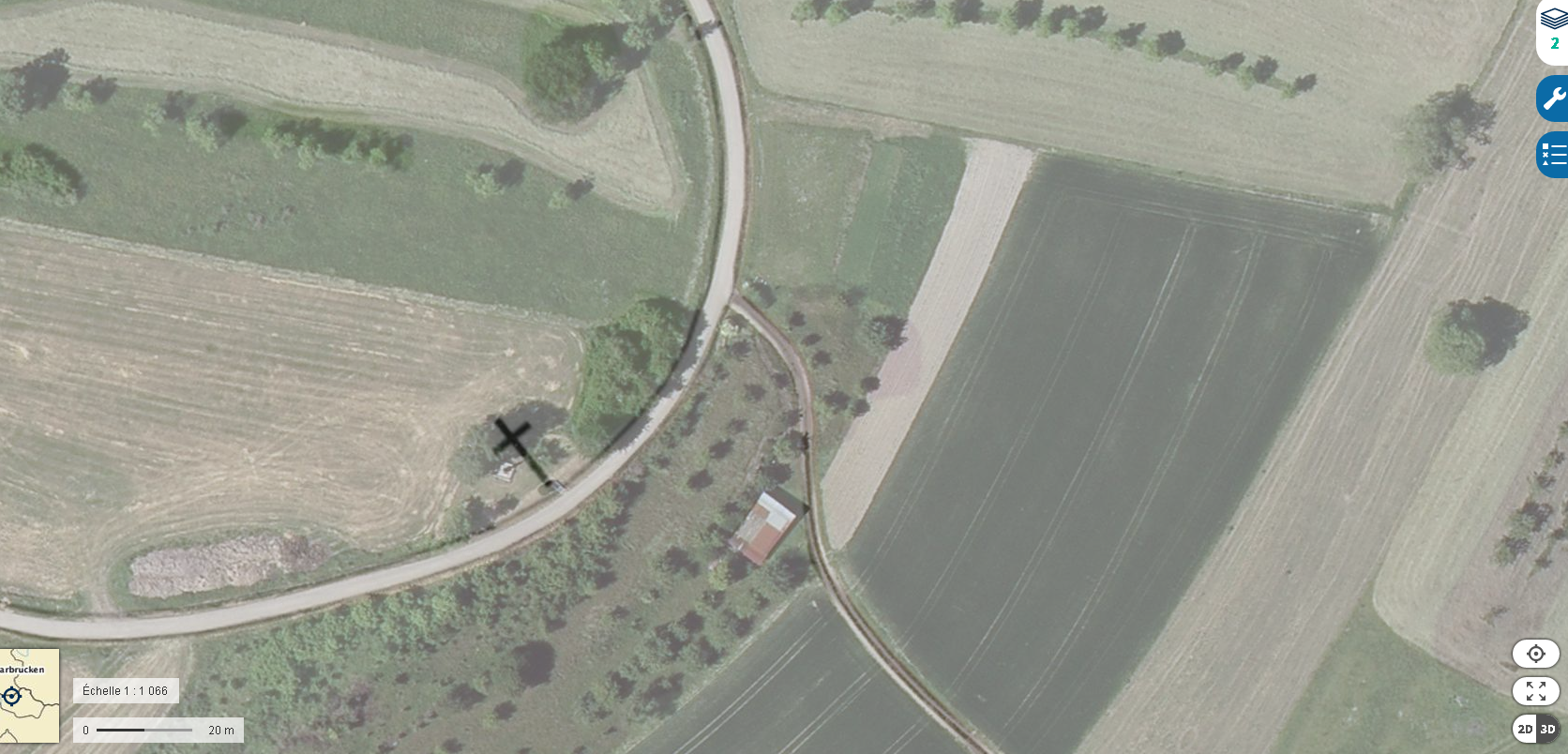
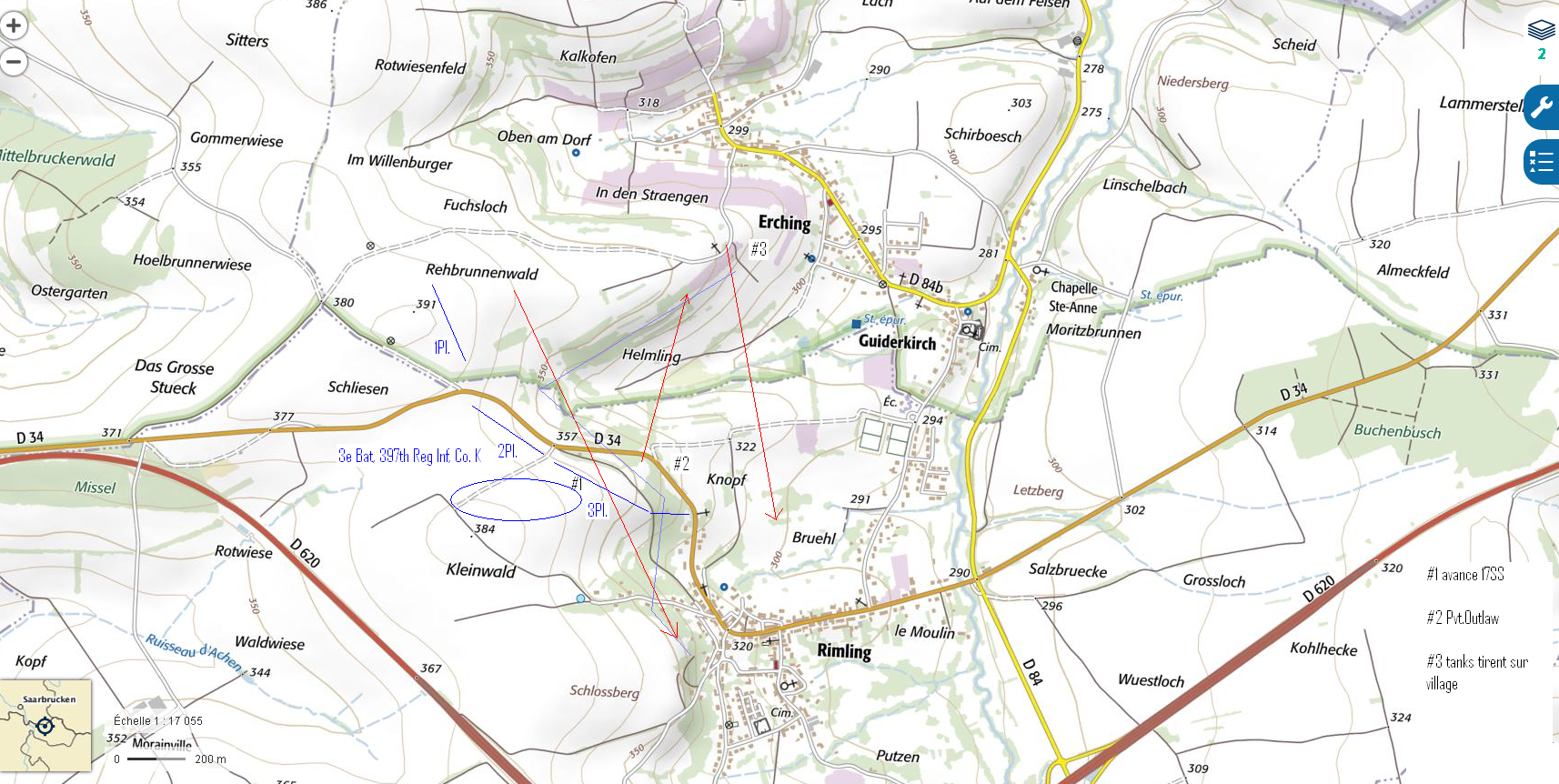
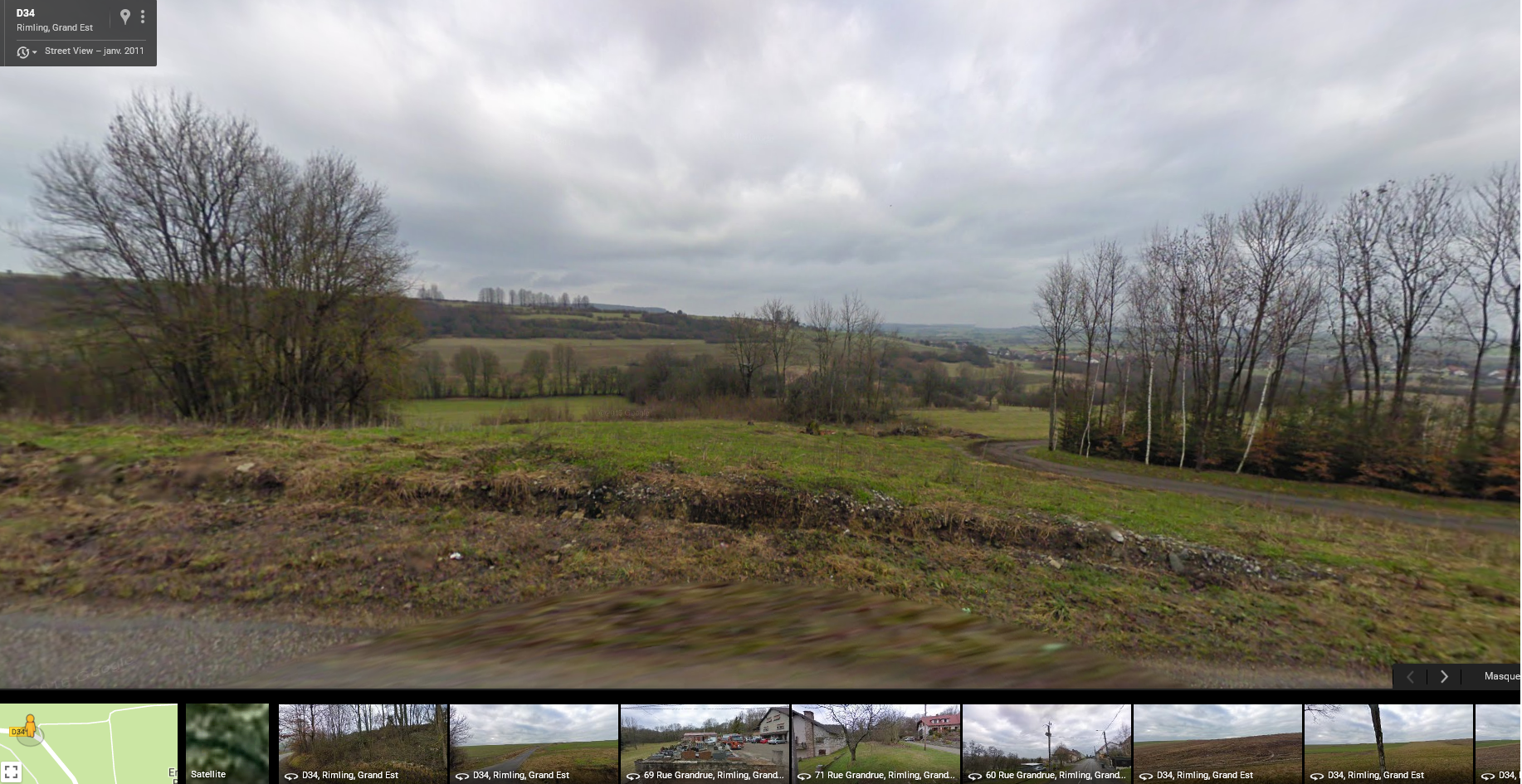 "When the Odds were Even"
"When the Odds were Even"
"As the assaulting Waffen SS men blew through the batalion's combat outpost's, they crested the rise of Schlietzen Hill only to face the full fury of the American's reverse slope defense. A single machine gunner, Pvt. Leon Outlaw of Company M, killed more than a hundred attackers with his .30-caliber water-cooled machine gun." (page 200)
"100 killed implies two or three times as many wounded. In other words, the better part of an entire battalion made hors de combat by one machine gunner"
Aussi le nom Outlaw est étrange.
"The 37th SS Pz.Gren. Regt. notes almost nothing about the figthing on Schlietzen Hill, but the report does state that it was the American artillery which was stopping the attack."
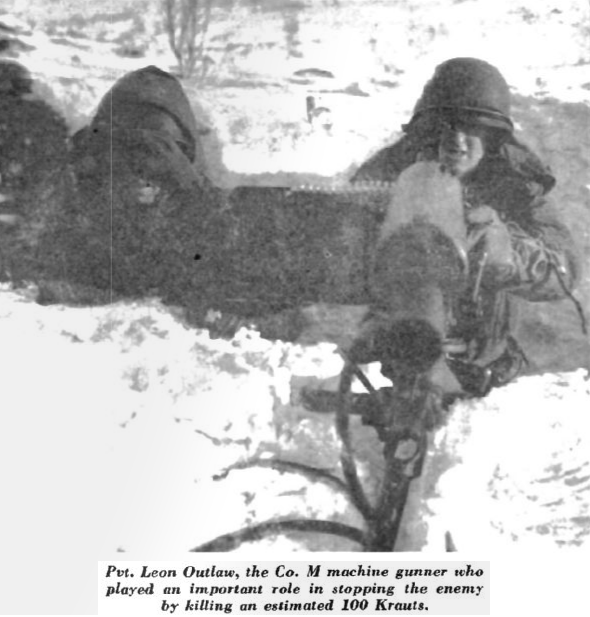
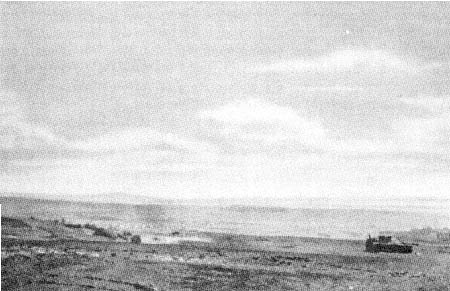
"Rimling area"
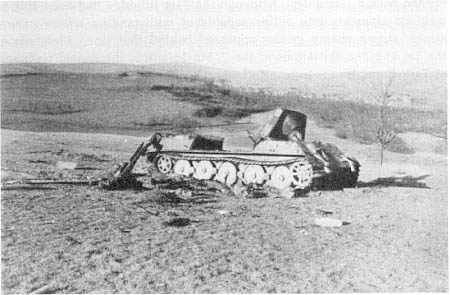
Jagdtiger détruit par Tank Destroyer sur les conseils du Sgt. Carey. Les munitions ont explosé.
CAREY, CHARLES F., JR.
Rank and organization: Technical Sergeant, U.S. Army, 397th Infantry, 100th Infantry Division. Place and date: Rimling, France, 8-9 January 1945. Entered service at: Cheyenne, Wyo. Birth: Canadian, Okla. G.O. No.: 53, July 1945. Citation: He was in command of an antitank platoon when about 200 enemy infantrymen and 12 tanks attacked his battalion, overrunning part of its position. After losing his guns, T/Sgt. Carey, acting entirely on his own initiative, organized a patrol and rescued 2 of his squads from a threatened sector, evacuating those who had been wounded. He organized a second patrol and advanced against an enemy-held house from which vicious fire issued, preventing the free movement of our troops. Covered by fire from his patrol, he approached the house, killed 2 snipers with his rifle, and threw a grenade in the door. He entered alone and a few minutes later emerged with 16 prisoners. Acting on information he furnished, the American forces were able to capture an additional 41 Germans in adjacent houses. He assembled another patrol, and, under covering fire, moved to within a few yards of an enemy tank and damaged it with a rocket. As the crew attempted to leave their burning vehicle, he calmly shot them with his rifle, killing 3 and wounding a fourth. Early in the morning of 9 January, German infantry moved into the western part of the town and encircled a house in which T/Sgt. Carey had previously posted a squad. Four of the group escaped to the attic. By maneuvering an old staircase against the building, T/Sgt. Carey was able to rescue these men. Later that day, when attempting to reach an outpost, he was struck down by sniper fire. The fearless and aggressive leadership of T/Sgt. Carey, his courage in the face of heavy fire from superior enemy forces, provided an inspiring example for his comrades and materially helped his battalion to withstand the German onslaught.
That is the citation for his Medal of Honor.
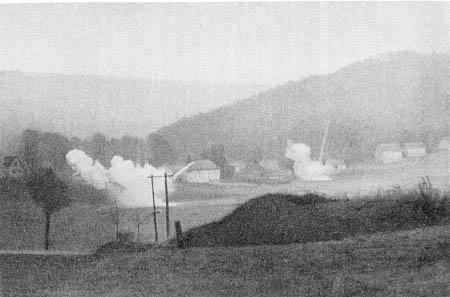
"Obus au phosphore contre les allemands, EGUELSHARDT"

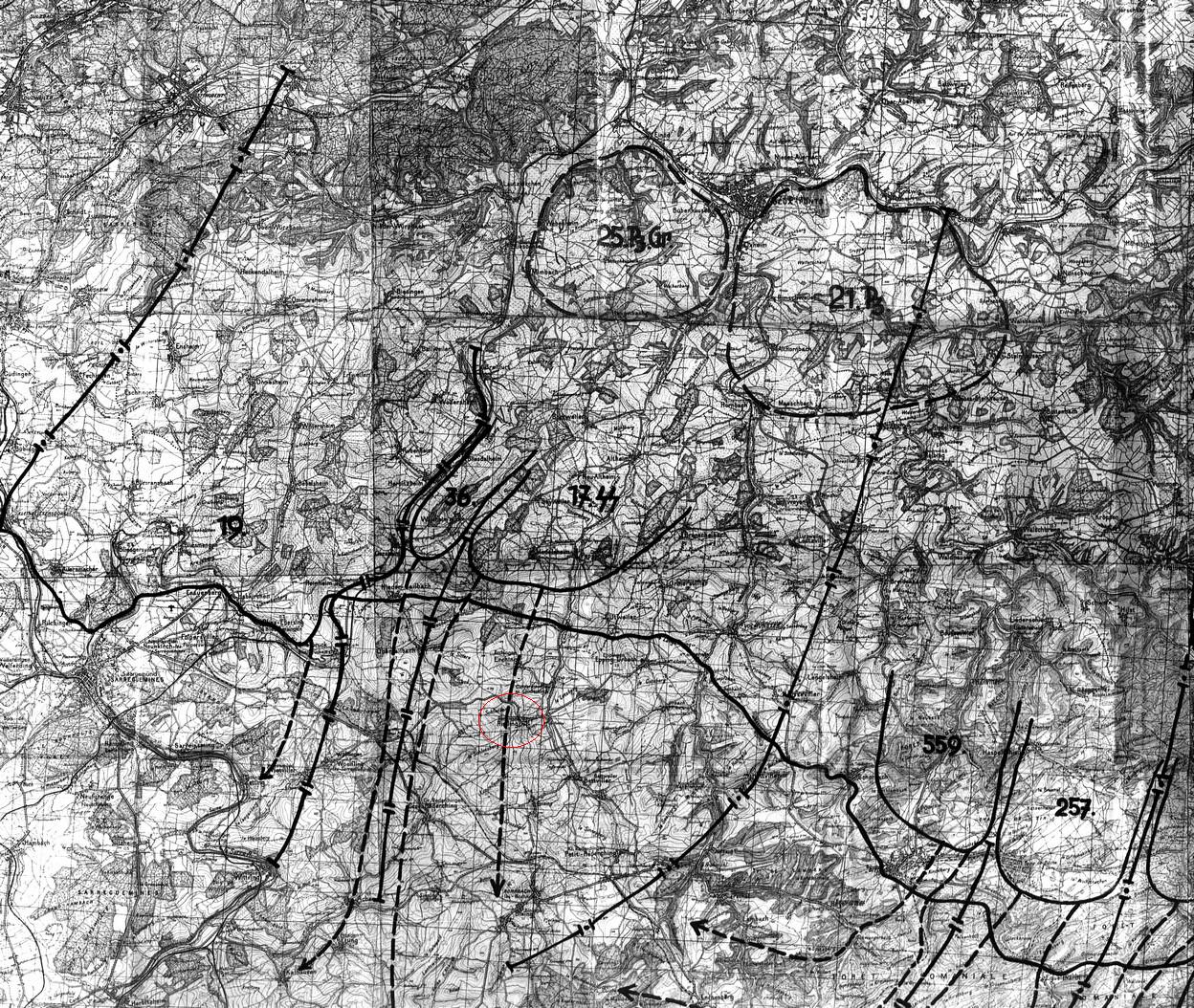
The German army struck in the closing hours of the old year with fanatical force. The 17th SS Panzer Grenadier Division spearheaded one attack group, its initial objective being the town of Rohrbach in the eastern Sarre Valley. (See Map 1) It was supported by two other divisions, the 19th Infantry Division and the 36th Volks Grenadier Division on its right. The 559th, 361st, and 256th VolksGrenadier Divisions comprised another attack group and struck southward from the Bitche area in the Low Vosges Mountains.
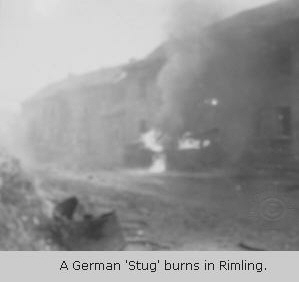
![]()
![]()
![]()
![]()
![]()

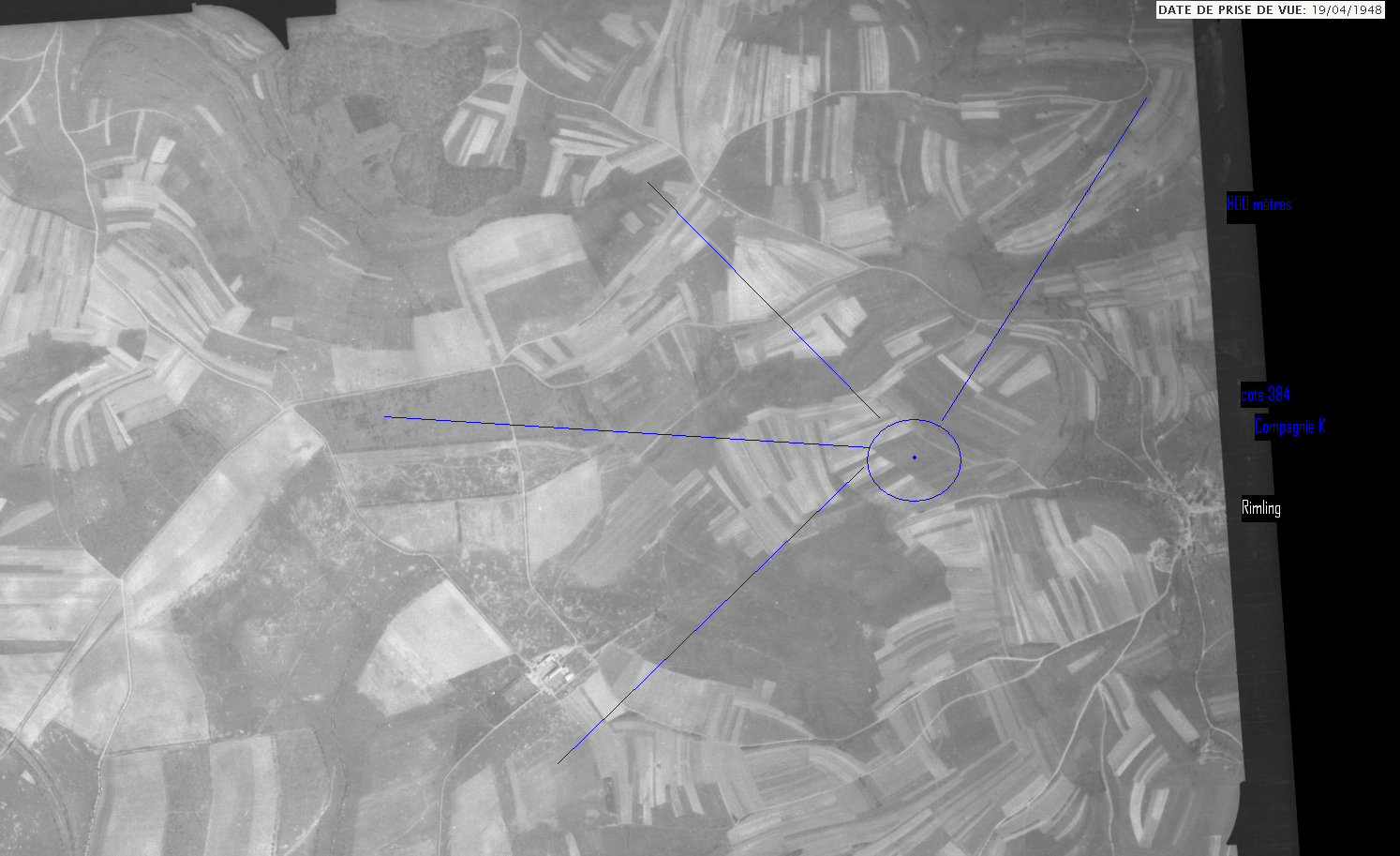 1948
1948
Sources
rimling.fr
Sgt Carey en français
raymond_bumgarner_WWII_memories
Google images
militaryhistoryonline.com
trailblazersww2.org
bitche3-the-george-c-marshall-foundation - top!
meyer.famille.free.fr
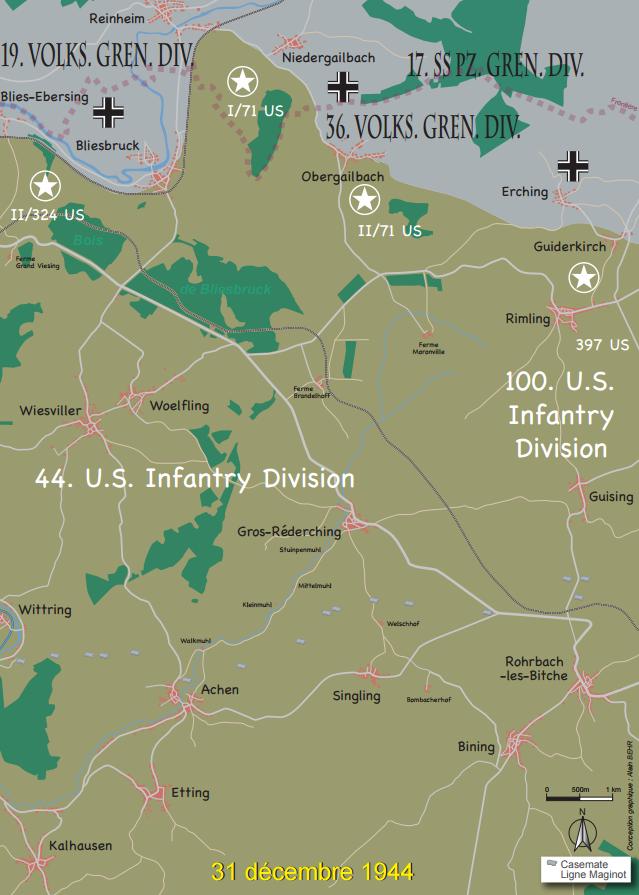
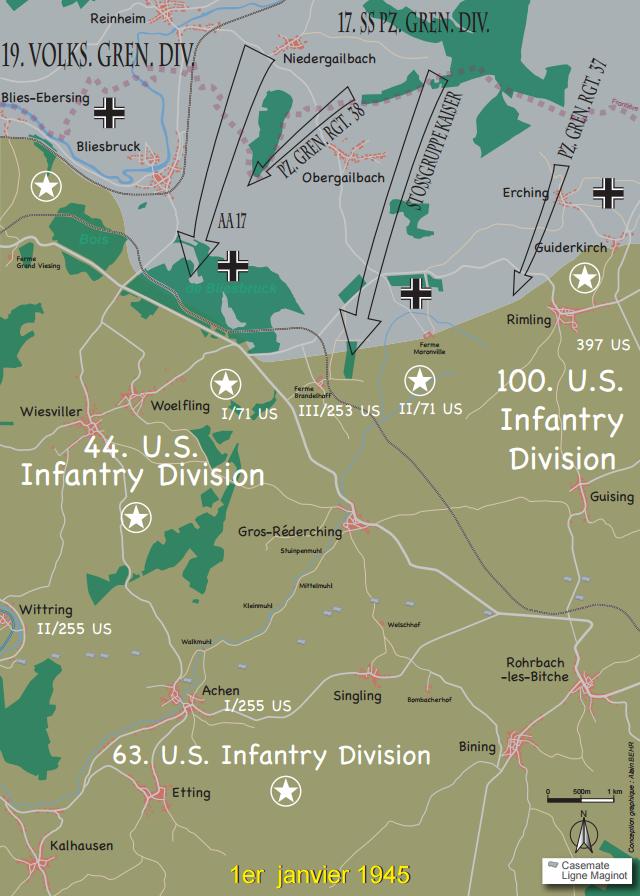
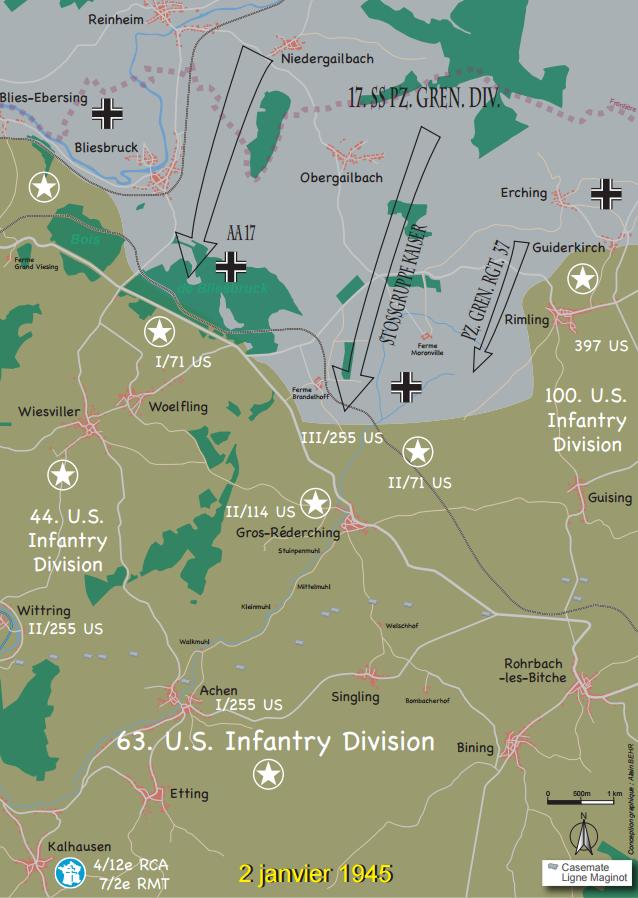
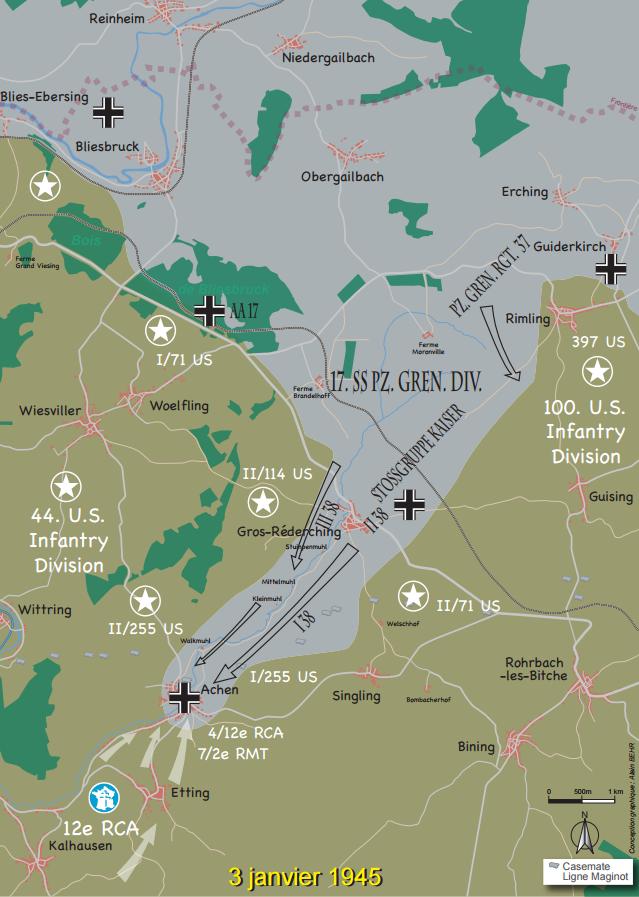
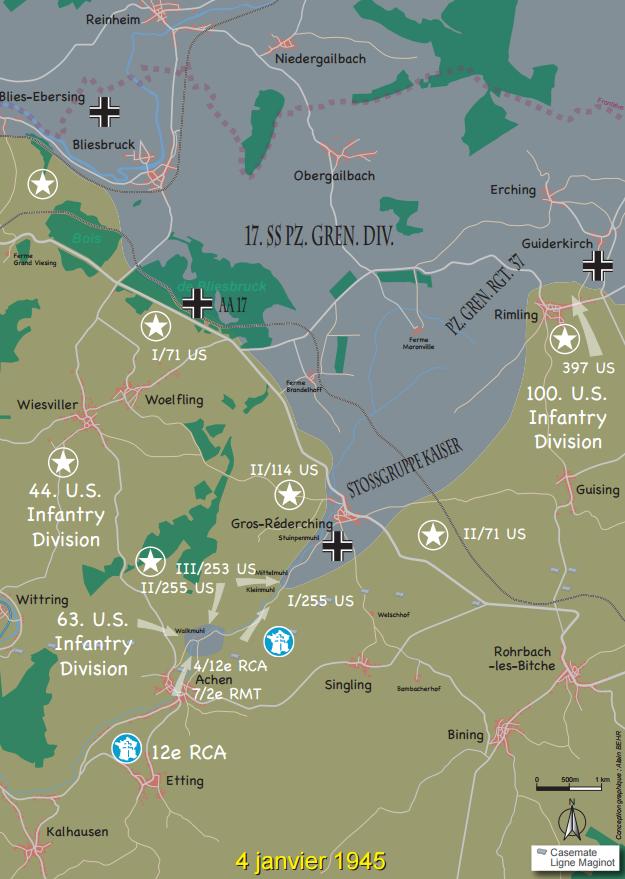






















 1948
1948